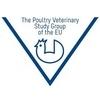Optimising Growth and Performance in Layer Birds using Polyherbals
Published: August 3, 2016
Source : Srijit Tripathi, Ayurvet
The poultry farming now-a-days plays a vital role in global economy. Farmers throughout the globe have moved from rearing domestic birds in the past to rearing hybrids which ensure faster growth of chicks, low mortality rates, excellent feed conversion ratio and consequently sustainable profits to the poultry farmers. This has been well supported by extensive efforts worldwide to improve the overall performance of the poultry in terms of growth and production so as to improve the economy of poultry production. Growth promoters, basically, are chemical and biological substances that are added to poultry feed with the aim to improve the growth, and FCR, increase immunity and vitality, regulating the intestinal micro-flora, reducing morbidity and mortality due to various diseases and there by realizing better production and profits. Growth promoters may be liver tonics which optimize hepatic functions of the birds. Antibiotics have been used since a very long time as growth promoters for poultry. Currently, there is a strong debate for minimising the use of antibiotic growth promoters in livestock as well as poultry destined for meat, milk or egg production, as their overuse over a period of time may lead to adverse and unwanted results, mainly antibiotic residues in animal products viz. meat, milk or eggs, long withdrawal period and development of resistance in microorganisms. The requirement for an appropriate substitute is a must in these circumstances.
While considering the possible alternative to use of antibiotics as growth promoters, the valuable points of consideration are not only relative short- and long-term costs but also their ability to produce the same growth promoting effects as the antibiotics without any side effects.
In herbal plants, a wide variety of active phytochemicals, including the flavonoids, terpenoids, polyphenols, carotenoids, coumarins, saponins and plant sterols have been identified with varied actions. Addition of these substances to the feeds and water have been found to improve feed intake, FCR and carcass yield. Herbs have been used as food and for medicinal purposes for centuries.
Ayurvet’s herbal growth promoter, HGP is a phytoadditive that is a bacteriostatic herbal growth promoter, having a number of beneficial effects, including: rapid development of a healthy gut micro flora, stabilization of digestion, increased growth performance, stimulation and rapid maturation of the immune system & many more. It has been mainly recommended for:
- Inhibition of pathogenic bacteria
- Promotes intestinal microbiocenosis
- Improves production performance and feed efficiency
- Stabilizes gut mucosa and reduces incidences of diarrhoea & enteritis
A study was conducted to characterize the effect of polyherbal formulation, HGP (Herbal Growth Promoter for poultry, M/s Ayurvet Limited), on performance of commercial layers.
Experimental Design:
40, healthy, day old BV 300 layer chicks were randomly allotted into two treatment groups.
Group T1 (n=20) : Control group, offered standard basal ration from day 0 to week 38th.
Group T2 (n=20) : Treatment group, offered basal feed along with HGP premix @500 gm/ton of feed, from day 0 to week 38th.
Study parameters were recorded in two phases i.e. from 0 to 19 weeks and 20 to 38 weeks.
Parameters:
- Body Weight
- Feed Conversion Ratio
- Hen Housed Egg Production
- Age At First Egg
- Serum Biochemical Parameters
- Egg Quality Traits
- Clinical Signs
Statistical Analysis
The data obtained on various parameters studied during the experimental trial were subjected to statistical analysis as described by Snedecor and Cochran.
RESULT AND DISCUSSION
Live body weight (g)
At 5th week, weekly live body weight/bird was significantly more in HGP supplemented group T2 birds, 266 g in comparison to control group T1 birds, 248 g.
This increasing trend in live body weight/bird continued till 19th week after HGP premix supplementation. At 19th week mean weekly live body weight/bird was 1204.50 g in HGP premix supplemented group T2 which was significantly more than unsupplemented control group T1 birds, 1189.25 g. Significantly more live body weight was recorded in HGP premix supplemented group T2 birds (1405.28) on 38th week in comparison to unsupplemented control group T1 birds (1322).
Feed conversion ratio
Mean FCR (0-8 weeks) in HGP supplemented group T2 was 2.74 in contrast to 2.84 of untreated control T1. Low FCR value means better ability of livestock to turn feed mass into body mass. In HGP supplemented group T2 the Mean FCR (0-19 weeks) was comparatively better i.e. 4.69 in contrast to 4.80 of untreated control T1.
Serum biochemistry
On 8th and 18th week the total serum protein concentration (g/dl) was found to be significantly better (P<0.05) in group T2 birds supplemented with HGP (4.78 and 4.50, respectively), as compared to untreated control group T1 (3.50 and 3.04, respectively).
Similarly the albumin concentration (g/dl) was found to be better in the group T2 birds supplemented with HGP (1.75 and 2.02, respectively on 8th and 18th week) as compared to untreated control group T1 (1.62, 1.85).
On 18th week in HGP premix supplemented group T2 birds had higher serum phosphorus and calcium concentration (mg/dl) (6.74 and 9.22, respectively) in comparison to untreated control group T1 (5.39 and 8.66, respectively).
The serum glucose concentration (mg/dl) was significantly (P<0.05) higher in HGP premix supplemented group T2 birds. On 8th and 18th week serum glucose concentration in HGP premix supplemented group T2 birds was 194.67 and 177.4, respectively significantly better than 157.63 and 145.62 in untreated control group T1 birds.
Hen housed egg production (HHEP)
The analysis of overall hen housed egg production of layer birds showed highly significant (P<0.05) difference among treatment groups. HHEP in HGP premix supplemented group T2 (76.07) was significantly (P<0.05) better in comparison to untreated control group T1 (70.80).
Feed efficiency per dozen eggs produced
Efficient utilization is one of the major concerns in commercial egg production. Feed cost strongly influence the poultry farm profitability. After HGP premix supplementation to group T2 birds, Feed efficiency (per dozen eggs) was significantly (P<0.05) improved i.e. 1.49 in comparison to untreated control group T1 (1.65).
Onset of egg laying and egg production
Live body weight at the time of commencement of egg laying determines its age at first egg, age at peak production and the overall performance of the hen. Age at first egg produced was decreased in HGP premix supplemented group (143.67 days) as compared to untreated control group (144.44 days).
Similarly, Mean total egg production (20-38 weeks) was found to be significantly higher (P<0.05) in the group T2 supplemented with HGP i.e. 101.167 as compared to control group T1 (94.167).
Egg biomass produced in HGP premix supplemented group T2 was significantly more (5461.49g) as compared to untreated control group T1 (5010.25g).
Egg quality traits
In today’s production oriented market Egg quality traits has become essential. Egg quality is the more important price contributing factor and affects eggs acceptability to consumers. Nutrition has influence on egg size.
Egg weight was increased in HGP premix supplemented group T2 birds. On 35th week Egg weight was more in HGP premix supplemented group T2 birds (55.83) in comparison to untreated control group T1 (54.56). After HGP premix supplementation the Yolk to albumen ratio was also increased. On 35th week, Yolk to albumen ratio was more in HGP premix supplemented group T2 (0.47) in comparison to untreated control group T1 (0.43). Yolk ratio was also increased in HGP premix supplemented group T2.
Recording of clinical signs
Over gross appearance of layer bird supplemented with HGP premix was better in comparison to untreated birds. Similarly, the abnormal clinical signs such as inappetence, nervous conditions, leg weakness were also not observed in HGP premix supplemented group T2 birds on the other hand leg problems in two birds and few abnormal eggs (shell less) were observed in untreated control group T1.
CONCLUSION
HGP premix supplementation elicited significant increase in egg production, improved feed conversion and overall performance without any harmful alteration in the biochemical parameters of commercial layer chickens.
Related topics:
Mentioned in this news release:
Rodec Pharma
Recommend
Comment
Share

31 de agosto de 2016
Dear Mr. Tripathi,
Your product seems to work wonderful. I am curious how it would work under non-Indian circumstances.
In your article you mentioned table 4, it could be me, but I was not able to find this table in your article.
Regards,
Peter Wijnen
Recommend
Reply
14 de diciembre de 2019
Pls how and where can we get ur products in Nigeria or do u have a representative here in Nigeria.
Recommend
Reply
Food & Allied Group of Companies
2 de septiembre de 2016
Please, has the product been tested in the field?
The results are very good in this study and they need to be confirmed in the commercial farms.
Recommend
Reply

Would you like to discuss another topic? Create a new post to engage with experts in the community.















